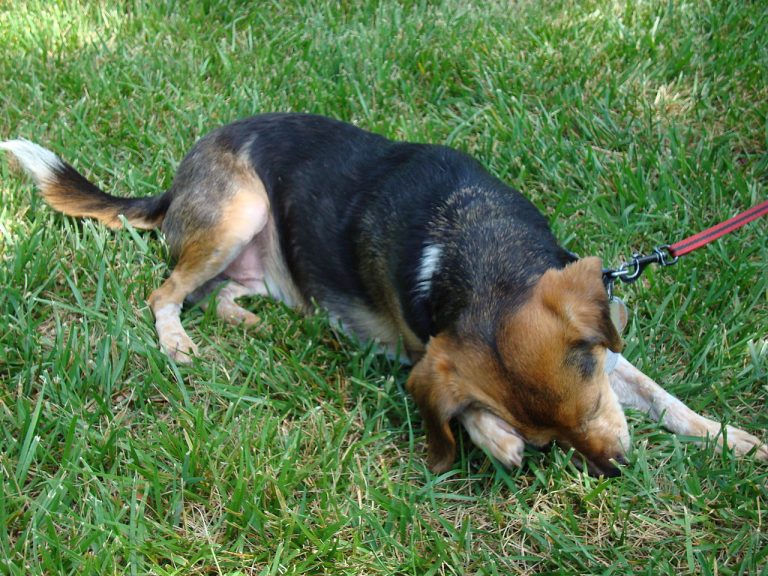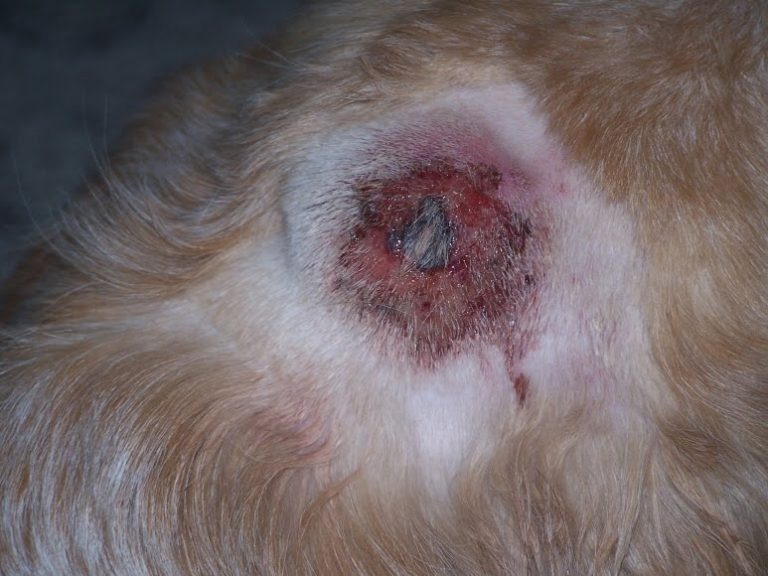Summer is upon us in the Northern Hemisphere. With the heat comes the potential for a painful skin condition called pyotraumatic dermatitis, often referred to as hot spots. Given the frequency with which this problem is diagnosed, I’ve dedicated some time to expound on it to increase awareness among dog parents. Happy reading!
Hot Spots – What are they?
Pyotraumatic dermatitis has many names, including acute moist dermatitis and superficial canine pyoderma. When moisture – from humidity, bathing, swimming, etc. – becomes trapped under the hair coat, skin easily becomes macerated. The maceration leads quickly to inflammation and infection by normal skin surface (e.g.: Staphylococcus species) and oral bacteria. These changes account for the “pyo” component of the condition’s name. Understandably, skin inflammation and infection are quite bothersome for dogs, causing intense itchiness (called pruritus) and discomfort. Affected pets readily chew and scratch at the affected areas, further traumatizing the wounds ad account for the “traumatic” component of its name.

Moisture from the environment trapped under the skin isn’t the only stimulus for dogs to develop hot spots. Anything that causes skin irritation that subsequently causes dogs to lick and/or chew excessively at specific area can result in pyotraumatic dermatitis. Saliva from the licking and chewing is more than enough to macerate the skin, putting into motion the process of hot spot development. Skin allergies, matted fur, insect bites, stress-induced chewing/licking, other primary skin conditions, irritation from grooming clippers, pain in an area underlying the skin, and/or contact with an irritating substance have all been implicated in the formation of pyotraumatic dermatitis.
Hot Spots – What do they look like?
The classic appearance of pyotraumatic dermatitis is red, oozing, superficial skin lesion. They’re itchy, foul smelling, and may have dried crusts/scabs. The skin sores lack hair, adjacent fur is typically adhered to them. Pyotraumatic dermatitis is quite painful, and affected dogs will likely resent examination of the skin lesions.
Hot Spots – How are they diagnosed?
Diagnosing pyotraumatic dermatitis is relatively straightforward. Identifying the characteristic skin lesions doesn’t require any sophisticated testing, only a thorough patient history and complete physical examination. It’s imperative pet parents mention when clinical signs began, as well as any circumstances that led to skin irritation.
Hot Spots – How are they treated?
Although the skin lesions are painful and often look quite nasty, they are superficial ones that typically respond well to prescribed therapies. Effective treatment involves:
- Shaving – The area of and surrounding skin lesions must be cleared of hair. Doing so reveals the true size of the lesion and allows drying oxygen to contact the wound and promote healing. Pet parents should know hot spots are like icebergs. What is visible to the naked eye is often only the tip of the iceberg. The actual affected area is much larger, only becoming apparent once appropriately shaved. A quarter sized area can easily become a grapefruit sized one, shocking many owners.
- Cleaning – Clearing the wound of debris, hair, infected discharge, and crusts is essential to promote healing
- Drying – Keeping hot spots dry is of paramount importance. The skin lesions will not heal appropriately if the skin remains moist
- Antibiotic therapy – Topical and/or systemic antibiotic therapy is often needed to treat the superficial skin infection
- Pain & anti-inflammatory medication – Hot spots are painful partly due to intense inflammation. The of pain medication and/or anti-inflammatory medications can hasten healing and improve patient comfort
The take-away message about hot spots in dogs…
Pyotraumatic dermatitis, commonly known as hot spots, is a common skin condition in dogs. Moisture from a variety of sources becomes trapped under the hair coat and subsequently macerates skin. This causes itchiness and infection, causing patients to further chew and lick to cause more trauma to the skin. With prompt identification and treatment, patients can recover uneventfully within a matter of days.
To find a board-certified veterinary dermatologist, please visit the American College of Veterinary Dermatology.
Wishing you wet-nosed kisses,
CriticalCareDVM






